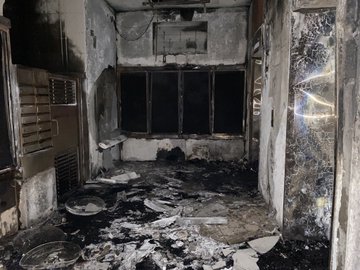2020:
January February March April May June July August September October November December
Original article put up on January 28th 2020
Note added 25/3/20:
Please also note that some things here I’d modify given the almost 2 months since I started this. In the confusion of this unprecedented situation, you discover a great deal more tentatively playing around with ideas than playing the perfectionist with some blanket dogma that ignores all the nuances.
24/1/20:
“As of today, the state has essentially quarantined an area estimated to encompass 35 million people—a population greater than the 10 largest U.S. cities combined. The unprecedented intervention paints an apocalyptic scene. Around the world, stock markets fell. …Based on what’s known so far, the virus is dangerous—but not unprecedentedly so. It has been confirmed to spread among people who are in close contact—family and health-care workers—but it does not clearly show sustained transmission among people, like other coronaviruses that can manifest as the common cold. The virus seems to have an especially high mortality rate, though of the 26 people reported dead so far, most have been of advanced age or chronically ill—a similar demographic to the hundreds of thousands of people killed every year by the influenza virus….so far, the most deadly coronaviruses—SARS and MERS—each killed fewer than a thousand. Both were tragic, but could have been exponentially worse. Part of the fear and panic in the current case seems less due to the virus than to the response. The moderately virulent nature of the pathogen seems at odds with the fact that the largest quarantine in human history is now taking place in an authoritarian state. People inside and outside of China have limited trust in the information they receive, given the country’s long history of propaganda and censorship. Without knowing everything that the state does, international officials have been hesitant to criticize its response. But there is good reason to believe that the quarantine itself will have significant consequences. Quarantines were common during Europe’s plague-addled Middle Ages, and continued to be the primary means of controlling outbreaks until 1900. Especially after the advent of antibiotics and diagnostic testing, the relative harms began to outweigh the benefits. International agreements were put in place to limit the practice as a matter of justice, because of the burden it placed on people and economies, in addition to basic questions of effectiveness. Quarantines may be used in isolated cases, especially before an outbreak is widespread. But in China, given the advanced spread of the outbreak—the new virus was first reported to the World Health Organization just three weeks ago and has since been found in Japan, South Korea, the United States, Thailand, Singapore, and Vietnam—some experts believe any window for effective containment has passed…Shortly after the quarantine was announced, The Washington Post reported increases in the cost of food in Wuhan. Some citizens have reported empty grocery shelves…. Social-media posts describe people being unable to get access to medical facilities for viral testing. Other posts on social media about the scope of the outbreak have inexplicably disappeared, prompting accusations of censorship and further uncertainty.”
In 2005 in France the avian flu “pandemic” was the first item of the evening news for about 6 weeks. Small farms were visited daily by gendarmes until they were forced to close down. Nobody in France died, and globally there were less than 1000 deaths of human beings, vastly smaller than deaths from ordinary flu annually. But it served the purpose of destroying small farmers/peasants and greatly boosting agribusiness.
“Until recently, the World Health Organization (WHO) estimated the annual mortality burden of influenza to be 250 000 to 500 000 all-cause deaths globally; however, a 2017 study indicated a substantially higher mortality burden, at 290 000-650 000 influenza-associated deaths from respiratory causes alone, and a 2019 study estimated 99 000-200 000 deaths from lower respiratory tract infections directly caused by influenza. ” – here. This is not to deny the fact that this new virus is killing people in greater proportion to those who have it than the proportion of those who die from ordinary flu as compared to those who get it, but it gives some notion of the disproportionate level of alarm. Meanwhile deaths from malaria are also quite high – 405,000, 67% of whom were children, in 2018.
In France in 2009 swine flu became the pretext for an exercise in social control – with doctors forced by the state to vaccinate everybody fearing the disease who wanted to be vaccinated. Despite massive and continual state and media propaganda, less than 10% of the population took up this manipulated ‘need’ for a vaccine. The Minister of Health at the time, Rosalyne Bachelot, whose personal interests in the pharmaceutical industry were well-known, ordered 94 million vaccines from Sanofi Pasteur, GlaxoSmithKline, Novartis and Baxter International at a cost of around 900 million euros to the state. Most of the vaccines were never used. As a result of the vaccine, there were 21 deaths, 4 anaphylactic shocks, 9 Idiopathic thrombocytopenic purpura cases, 6 multiple sclerosis cases, and 9 Guillain–Barré syndromes. The illness itself killed about 100 people (though it’s hard to get figures).
Undoubtedly illness and disease are constantly used for ulterior motives which will invariably be dismissed as ‘conspiracy theory’ by interested parties. Often the state allows genuine problems (and certainly not only health-related ones) to develop to use a crisis so as to consequently crack down on potential revolt. This is not to ignore the obviously ridiculous conspiracy theories around the Coronavirus, whose effect is ultimately to make many of those who recognise the absurdity of many of these claims accept everything official ideology proclaims about it, since anything critical can be dismissed as some stupid conspiracy “theory”.
Which is why we should not forget that Wuhan – the centre of the Coronavirus – had a significant social movement in July 2019 which tentatively began to connect to the movement in Hong Kong ( see this, this, this, this, this, this, and this), which may be a factor in this exercise in authoritarian repression. And Hong Kong too is experiencing some minor elements of control as a result of this virus. In the face of the very tenuous beginnings of significant social contestation in countries throughout the world, fear of touching or proximity to others is another convenient factor in the intensification of social separation. Given the ‘spontaneous’ racism of many people, it doesn’t need to be deliberate policy for it to be exploited in such a way as to exacerbate already existing separations – such as racism towards anyone who looks Chinese (see, for instance, this).
Moreover, given the fact that the doctor who originally discovered this virus was arrested and accused of “rumour-mongering”, it’s hard not to speculate if the Chinese bureaucracy intentionally wanted this virus to spread. And perhaps conveniently blame the local bureaucracy in Wuhan of gross incompetence so as to get rid of rivals in the CCP’s internal battles. Sure, this is pure conjecture, and it implies that the State is omnipotent and invariably in control of forces that are often beyond its control. It would suggest that the CCP was capable of undermining its own global bid for world market supremacy (the effect of the virus has been to weaken Chinese capital) because of a greater threat of internal subversion perhaps triggered by the limited revolts in Hong Kong, and Wuhan itself. In other words, figuring out that reducing its capacity for capital accumulation in the immediate term was worth it in order to suppress the possibility of revolt. Possibly too many incalculable risks for the State to have proceeded in such a Machiavellian manner, though it’s still a possibility. However, it’s not really worthwhile going down this road of hypothesis-fantasy. After all, it’s how the state actually uses this “crisis” that’s important not tracking down the manipulations and manoeuvres that seem to be behind it.
Conspiracy “theory” is often just a way of constantly researching – and often inventing – “proofs” with the sole aim of proving something that’s largely impossible to prove without having direct access to the hidden secrets at the centre of Power. And almost invariably involves ignoring any evidence that may conflict with the conspiracy ideology: having decided dogmatically on the fact that a situation is a conspiracy, it would be inconvenient to look at anything that might run counter to such a possibility. In an age of confusion and uncertainty, conspiracy “theory” functions like other forms of dogma – as a way of affirming a fixed idea that seems to rise above the turmoil. In a world that’s utterly insecure, those on the absolute margin of existence seek out fixed certainties that substitute for confronting this increasingly chaotic world, that substitute for a more open ‘nuanced’ attitude towards people and ideas.
Conspiracy “theory” is usually an obsession which aims to sell the “theorist” as a particularly lucid opponent of political intrigue. Whereas in fact, it’s just a grandiose internet-fueled political version of what used to be seen as petty gossip. Substitute “Jerry’s sleeping with his ex-wife’s girlfriend” with “Xi Jinping hates Zhou Xianwang because…”. Just as in the past the largest section of society objectively reduced to being spectators of history – women – resorted to gossip as a form of manipulation substituting for direct ability to influence events, so nowadays there are many who essentially remain spectators who feel that they overcome their separation from history by spreading conspiracy “theories”.
“Conspiracy ideology becomes a strategy which mediates all of reality. For the believer, the clouds rain conspiracy, the sunshine nourishes it. Its favorite climate is fog, the element of confusion, where secrets are wrapped in a nebulous environment that animates mundanity. Facts are relevant only as details in the landscape which jive or don’t jive with what the believer wants to see. …Conspiracy ideology does not set out to demonstrate the real motive forces behind human practice (including the actual role, if any, of conspiracies within the development of events), but rather takes the conspiracy as beginning and end. The notion itself of conspiracy constitutes the totality of its substance. Conspiracy ideology is a quintessential reflection in ideas of commodity production: each new detail at once creates the need for more details and confirms the value of all previous investigation (consumption). Each detail is a commodity in and of itself. The goal – discovery – is always a letdown, a pageant of bureaucratic tedium. The process is everything. Conspiracy ideology is modernist to the extent that it makes interpretation participatory. The specialist is not the person best able to interpret the evidence, but the person who uncovers it. The interpretation is left to mutilated subjectivity….” – here (written in 1979!)
But
in Hong Kong some people are resisting.
“Protesters threw petrol bombs on Sunday night at an empty public housing complex in Hong Kong that had been earmarked to become a temporary quarantine zone as the city battles an outbreak of the SARS-like Novel Coronavirus as the city battles an outbreak of the SARS-like Novel Coronavirus…Dozens of local residents and protesters opposed to the idea held rallies outside the complex on Sunday, with some setting up road blocks…The city’s ability to combat the crisis was hampered by moves in mainland China to cover up and play down the outbreak, leaving a lasting legacy of distrust among many Hong Kongers.”

 The lobby of the proposed quarantine building
The lobby of the proposed quarantine building

More surveillance, tighter controls: China’s coronavirus crackdown
“A man stands next to a cart in a snow-covered field in Inner Mongolia, trying to carve a path. A drone hovers in the distance and a voice calls out: “Uncle, why are you still going out without a face mask? Don’t laugh. Hurry up and get in your car and go home.” As the man drives away, glancing back, the drone follows him and the voice warns: “Don’t come outside if you don’t have to. Rest at home … What are you looking at? Go!”…More than 50 million people have been placed under a lockdown and myriad directives have been issued, from enforcing temperature checks and “strengthening monitoring” of citizens’ health to persuading people not to hold weddings or other large gatherings….”
On the uselessness of facemasks
Updated on 4th February with statistics about ordinary flu, and the two links immediately above about China’s use of the epidemic to reinforce already existing tendencies to totalitarian surveillance and the uselesssness of facemasks.
Updated further on 8th February with an elaboration on the contradictions of conspiracy “theories”.
PS This – Will the coronavirus outbreak derail the global economy? could well become the official reason for an economic recession-cum-depression which was already predictable way before the Coronavirus “crisis”, the justification for further attacks on the working class.
 Homeopathic cure for the virus
Homeopathic cure for the virus
 The only system we want to be strong is the immune (system)
The only system we want to be strong is the immune (system)

Leave a Reply